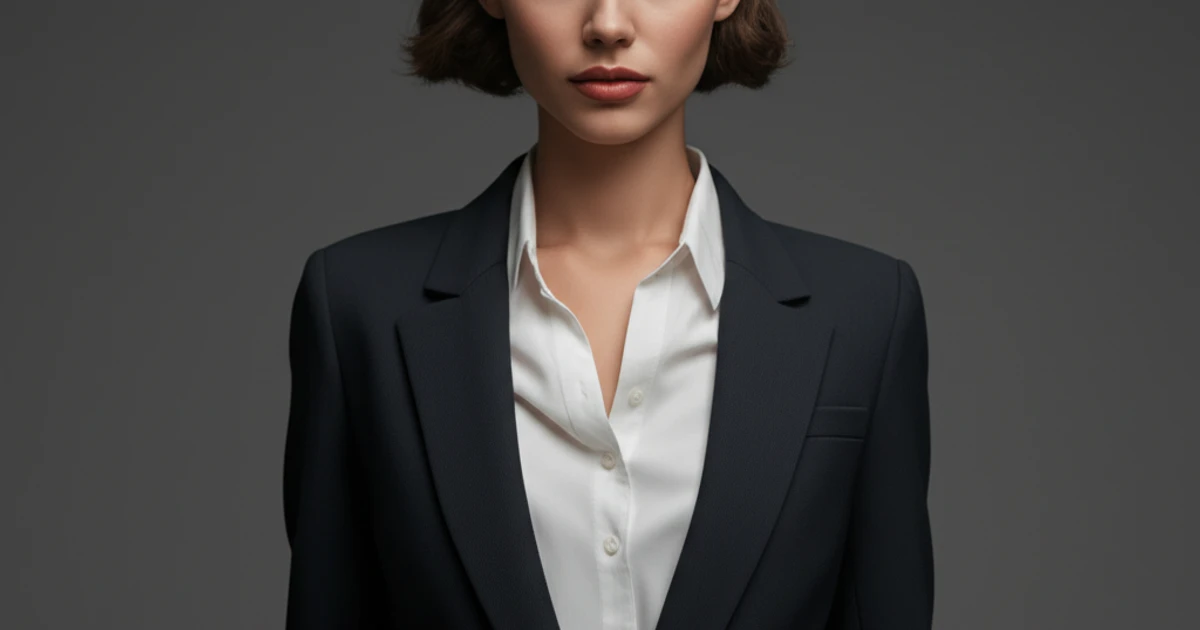Beyond the Hanger & The Checkout: Unraveling Retail vs. Fashion Fashion
Ever walked into a bustling department store, the air thick with the scent of new clothes and possibility? You see racks brimming with vibrant colors, feel the soft brush of cashmere, and perhaps even catch a glimpse of a meticulously arranged window display. In that moment, are you experiencing “retail” or “fashion”? Or is it both, an intricate dance between commerce and creativity?
As a blogger deeply passionate about demystifying the industries that shape our world, I often ponder the subtle yet significant distinctions between these two titans. For students just dipping their toes into the professional ocean, or seasoned professionals looking to sharpen their perspective, understanding the nuances of retail vs fashion isn’t just academic – it’s crucial for navigating a dynamic, ever-evolving landscape. So, let’s pull back the curtain and explore the fascinating differences and unexpected overlaps that define these powerful forces.
What Really Happens Beyond the Hanger? Defining Retail.
Think back to my first Saturday job, a world away from where I am today, in a small boutique. I remember the thrill of the cash register ringing, the art of folding a perfect stack of sweaters, and the meticulous process of restocking shelves. That, my friends, was retail in action.
At its core, retail is the act of selling goods directly to the end consumer. It’s the engine of commerce, the transactional heartbeat that ensures products move from manufacturers to your hands. But it’s so much more than just a storefront. Retail encompasses a vast operational universe: supply chain management, inventory control, logistics, customer service, store design and visual merchandising, pricing strategies, and data analytics. It’s about efficiency, experience, and the optimization of every single step to facilitate a successful transaction. From a local corner shop to an e-commerce giant, retail’s focus is on the *how* and *where* of selling, creating an accessible and desirable path for products to reach their intended audience. It’s about making the buying journey seamless, satisfying, and repeatable.
Is Fashion Just About the Clothes We Wear? Unpacking Its Essence.
Now, shift your gaze. Imagine the hushed anticipation before a runway show, the audacious creativity of a designer’s sketch, or the thoughtful curation of an editorial photoshoot. Is that “retail”? Not quite. This is the realm of fashion.
Fashion, in its essence, is a broader cultural phenomenon encompassing the design, creation, and trends of clothing, accessories, and even broader lifestyle aesthetics. It’s about identity, expression, art, and innovation. Fashion designers dream up collections, trend forecasters predict the next big wave, textile innovators develop sustainable fabrics, and marketing teams craft compelling narratives around brands. It’s about vision and storytelling, about influencing culture and reflecting the zeitgeist. Fashion dictates *what* is created, *why* it matters, and *how* it communicates a message. It’s less about the transaction itself and more about the inspiration, the aspiration, and the cultural conversation that surrounds what we choose to adorn ourselves with.
Where Do Their Paths Diverge? Exploring Core Differences.
If retail is the meticulously built stage, then fashion is the captivating play performed upon it. While they interact constantly, their primary objectives and inherent natures are distinct.
The most fundamental fashion industry differences lie in their primary drivers. Retail is driven by sales volume, profit margins, operational efficiency, and customer satisfaction at the point of purchase. Its success is measured in transactions, turnover rates, and average basket value. Fashion, on the other hand, is driven by creativity, innovation, brand perception, cultural relevance, and artistic expression. Its success can be measured in critical acclaim, influence, brand equity, and the ability to set trends. Consider a discount apparel retailer versus a haute couture design house: one optimizes for rapid turnover and affordability, the other for craftsmanship, exclusivity, and artistic statement. This stark contrast illustrates how their core motivations steer them in different directions, even if they ultimately rely on each other.
Can They Truly Live Without Each Other? Unveiling the Overlaps.
Despite their distinct identities, the truth is, neither retail nor fashion can truly thrive in isolation. They are two sides of the same exquisitely crafted coin, bound together in a symbiotic relationship.
Fashion needs retail to bring its creations to life, to reach its audience, and to complete the commercial cycle. A breathtaking collection, no matter how revolutionary, remains a mere concept without the retail infrastructure to distribute, market, and sell it. Conversely, retail desperately needs fashion to provide compelling, desirable products that entice consumers through their doors (physical or virtual). Without the constant influx of new trends, innovative designs, and fresh narratives, retail shelves would gather dust. This is where the magic of fashion vs retail truly comes alive: in their shared goal of understanding consumer desires, anticipating demand, and creating desire. The rise of omnichannel retail, personalization at scale, and sustainability initiatives are all areas where these two forces aren’t just overlapping, but merging, creating exciting new avenues for growth and engagement.
What Does the Future Hold for This Dynamic Duo? An Industry Guide Forward.
The lines between retail and fashion are blurring at an unprecedented pace, promising an exciting, albeit challenging, future. Digital transformation continues to reshape how products are designed, presented, and sold. The emphasis on ethical sourcing and transparency is influencing both manufacturing and marketing. And experiential retail is transforming stores into destinations, not just transaction points.
For students dreaming of a career in these vibrant sectors, or for seasoned professionals seeking to stay ahead, a holistic understanding is paramount. The successful professionals of tomorrow will be those who appreciate the creative vision of fashion *and* the operational mastery of retail. They’ll be able to speak the language of design while understanding supply chain complexities. They’ll grasp the art of brand storytelling while optimizing e-commerce conversions. This integrated perspective is not just an advantage; it’s quickly becoming a necessity, shaping the ultimate industry guide for success. The future isn’t about choosing one over the other; it’s about mastering their beautiful, intricate dance.
The journey from a designer’s sketch to your wardrobe involves a complex, interwoven tapestry of creativity and commerce. By understanding the distinct roles and profound connections between retail and fashion, you gain a powerful lens through which to view, analyze, and ultimately, innovate within these captivating industries. So, the next time you browse a boutique or scroll through an online collection, remember: you’re witnessing a magnificent collaboration in action, a testament to the enduring power of both vision and execution.


